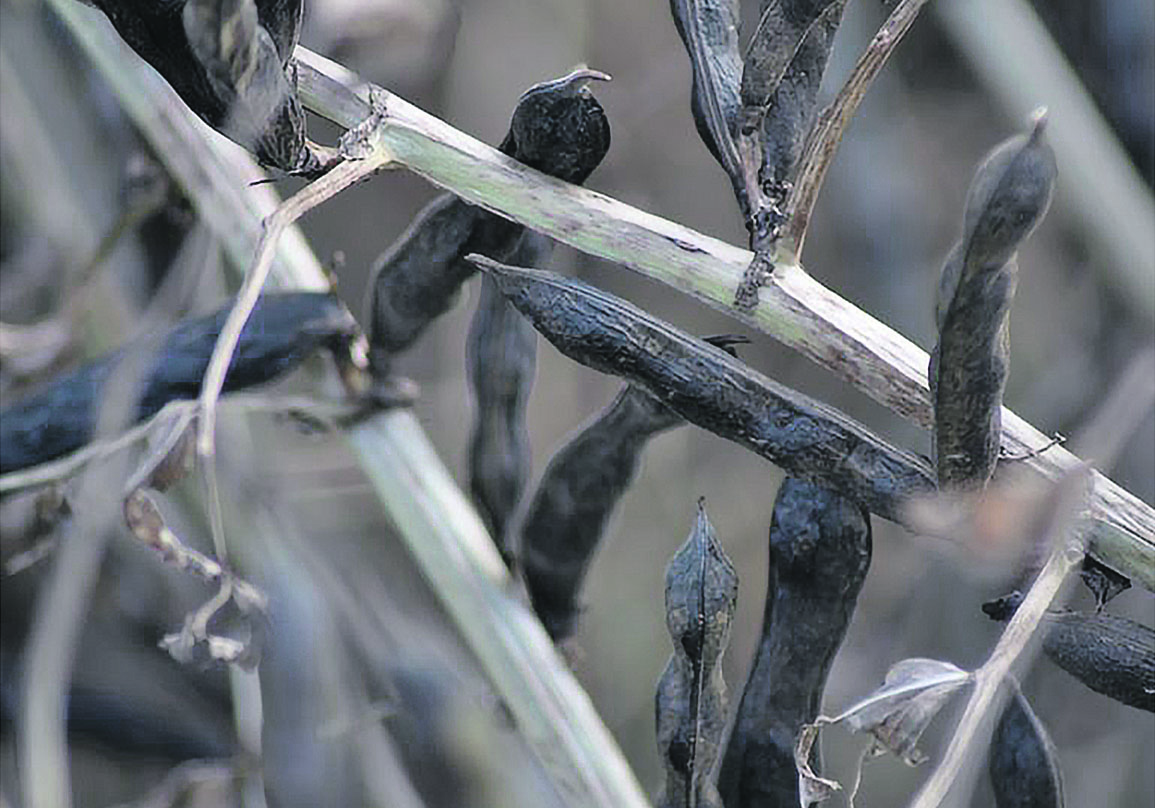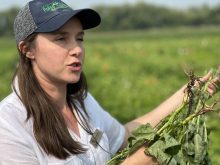Results of a Canadian research project show that pork producers may have a new, safe and low-cost feed source.
Researchers with the University of Alberta, as well as the University Autónoma de Baja California and Mexicali, México, set out to establish the benefits of frost-damaged fababeans in pig diets.
They found that feeding frost-damaged fababeans to weanling pigs caused no difference in feed intake or average daily gain compared to other fababeans. For that matter, neither did dehulled beans, mid-tannin or undamaged beans.
Read Also

Feds propose overhaul of chronic wasting disease control program
Chronic Wasting disease control program getting updated by Canadian Food Inspection Agency with feedback encouraged from producers.
“Pork producers may therefore source nearly mature, grey to blackened, frost-damaged fababean at reduced cost to lower feed cost,” read the research abstract.
Fababeans are among the pulse crops flagged as a potentially important crop in Western Canada environmentally, even though they don’t cover a lot of ground in a growing season. They require little to no nitrogen fertilizer, being the legumes noted for fixing the most atmospheric nitrogen.
From a feed perspective, they’re also desirable, containing 35 to 40 per cent starch and 25 to 30 per cent protein.
However, they also have a reputation for being harmful to pigs. That information is related to the amount of tannin in the bean. Until companies started breeding low-, medium- and zero-tannin beans, all fababeans contained high amounts of tannin. High tannin content can lead to low protein digestibility in pigs and hamper feed intake.
However, lower-tannin varieties such as Snowbird do not have the same effect.
“When you have that level of tannin, that’s actually no concern for feeding pigs,” said Ruurd Zijlstra, co-lead of the project and an animal science professor at the University of Alberta.
The difficulty with lower-tannin fababeans is on the production side. They have a lengthy growing season, requiring several more weeks to grow than field peas. This makes them susceptible to frost damage, so removing the tannins is an issue.
“Those tannins are there in the seed for a reason and one of those reasons is frost protection,” said Zijlstra. “So when you have very low-tannin cultivars, they actually have less protection against frost damage than the medium-tannin cultivars would have.”
The researchers were primarily interested in whether frozen faba could play a role in pig diets as a less expensive feed option. The key was measuring feed intake and average daily gain.
The project was driven in part by recent research with broiler chickens, which revealed frost-damaged faba features high energy and amino acid digestibility. Feeding them to broilers did not reduce the birds’ growth performance, carcass traits or yield of saleable cuts.
The research team wanted to verify these findings on pigs, which are “far more sensitive to taste and preference than chickens,” according to the summary.
The project included a nursery trial that fed 240 weaned pigs a range of fababean treatments, including an undamaged zero-tannin Snowbird variety (6 g/kg tannins), frost-damaged Snowbird, dehulled undamaged Snowbird, dehulled frost-damaged Snowbird, the mid-tannin Florent variety (14 g/kg tannins) and dehulled Florent fababeans. These were fed over two growth phases starting one week post-weaning.
The dehulled treatments removed the whole outer hull of the bean, in the process removing some of the fibre that can reduce nutrient digestibility, said Zijlstra. Nursery pigs were weaned at three weeks of age, and a week after weaning the researchers began phase one, in which 20 per cent of each of the six fababean samples was included for two weeks.
In the second phase, they included more fababeans and fed that for an additional two weeks.
“The overall conclusion is that when you look at the parameters of the studies that we work with, there was no change in feed intake or growth when we fed each of these six fababean samples,” said Zijlstra.
Basically, it means there can be a market for frost-damaged beans that most other buyers won’t want.
“Now you can clearly say, ‘well, yes, I’m willing to take a lower price for my fababeans,’ but at least you know now for sure, when you then talk to the person who’s buying the fababeans, there is not a risk that the pigs will not eat (that) particular food product,” said Zijlstra.
“So in other words, you can still be comfortable producing a product that has a good nutritional value when it comes to feeding pigs.”
This may give hog producers a bargaining advantage, he said.
“So then it depends on how much of a reduction in price is the crop producer willing to take and how much of a price is the pork producer willing to pay for the profit? So if it’s like a 10 per cent difference, or whatever it is, that’s a negotiation between the two partners.
“So what our research clearly showed, it takes the risk out of the marketplace.”
















